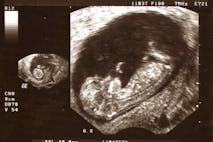
Federal judge dismisses 'flawed' Satanic Temple lawsuit against Idaho pro-life laws
Cassy Cooke
·
Fact Checks·By Anne Marie Williams, RN, BSN
Controversial Texas 10-Day Rule leads pro-life group to release video on facts about ‘brain death’
Texas Right to Life released a brief, informative video this week pointing out three facts about brain death according to Texas law, as well as three questions which concerned family members can pose to hospital staff in the event that there is talk of their loved one being brain dead.
Texas has come under scrutiny for what some are calling a draconian policy known as the 10-Day Rule, which “requires families who disagree with a hospital’s decision to remove a patient’s life support to find another facility willing to take the patient within 10 days.” The video opens by noting that “many people are completely caught off guard when their loved one suffers a brain injury, and as a result they don’t know what to expect, what to do, or what to ask. ”

Three Points about Brain Death according to Texas Law
1. “There is a difference between diagnosis and declaration”
Right to Life of Texas notes that “there is a difference between a diagnosis and a declaration. A diagnosis of brain death means that they [hospital staff] believe the patient to be brain dead, but such diagnosis has yet to be finalized. Once an individual is declared brain dead, however, that decision is final and a hospital can legally remove life support at any time, regardless of the family’s wishes.”
2. “Your only time to act is between a diagnosis and an actual declaration”
According to the video, “the only time you as a family member have time to act is between an impending diagnosis of brain death and an actual declaration. This is when you can ask for a second opinion or ask for more definitive tests to be run.”
3. “To legally declare brain death, there must be zero brain function detected in the patient.”
The pro-life group points out that “there must be zero brain function detected in the patient. Sometimes physicians will use terms such as ‘limited brain function’ or ‘partial brain death’ to try to convince families to pull the plug on patients when the physicians cannot legally do so. This is not the legal definition of brain death and you do not have to consent to stopping treatment.”
Three Questions to Ask the Doctors
1. “Is there any activity or function in his or her brain stem?”
Texas Right to Life notes that if the answer to this question is ‘yes,’ “your loved one does not meet the accepted legal or medical standards for brain death. Immediately bring this to the hospital’s attention and you can often reverse a brain death diagnosis.”
2. “Has a blood flow study been run?”
While blood flow studies, which assess blood flow in the brain, are understood to be the “gold standard” for diagnosing brain death, “often hospitals will rush to diagnose brain death using other methods, especially in rural regional hospitals.” Texas Right to Life has directly worked with families who were able to get brain death diagnoses reversed and whose loved ones lived after a blood flow study was done.
3. “Have the test results been assessed by a neurologist?”
Alarmingly, Right to Life Texas says, “Texas law does not require skilled neurologists to be the ones who assess, diagnose, and declare brain death. This varies by hospital, but some let general physicians make these decisions. Insist on an assessment by a neurologist, and this may very well save your loved one.”
The press release provided via email to Live Action News encouraged Texas residents in need of free assistance regarding a brain death diagnosis to contact them through their website or by calling 713-582-5433.
Controversy surrounding the concept of “brain death” is ongoing. As American Life League asked, “If [brain death] were identical and equivalent to death, why would it be necessary to coin a new term?” The pro-life group argues, “Death is the total cessation of all brain activity, including the brain stem, combined with the cessation of cardiopulmonary functions. Neither the cessation of brain activity nor the cessation of cardiopulmonary functions alone is sufficient. A person is either truly dead or he is still living. The “brain death” diagnosis indicates that, in fact, the patient is not actually dead.” (emphasis original)
Pro-lifers are right to be cautious when it comes to brain death diagnoses. Texas Right to Life’s video can help cut through the confusion.
“Like” Live Action News on Facebook for more pro-life news and commentary!
Live Action News is pro-life news and commentary from a pro-life perspective.
Contact editor@liveaction.org for questions, corrections, or if you are seeking permission to reprint any Live Action News content.
Guest Articles: To submit a guest article to Live Action News, email editor@liveaction.org with an attached Word document of 800-1000 words. Please also attach any photos relevant to your submission if applicable. If your submission is accepted for publication, you will be notified within three weeks. Guest articles are not compensated (see our Open License Agreement). Thank you for your interest in Live Action News!

Cassy Cooke
·
Fact Checks
Cassy Cooke
·
Fact Checks
Madison Evans
·
Fact Checks
Nancy Flanders
·
Fact Checks
Madison Evans
·
Fact Checks
Nancy Flanders
·
Issues
Anne Marie Williams, RN, BSN
·
Analysis
Anne Marie Williams, RN, BSN
·
Analysis
Anne Marie Williams, RN, BSN
·
Issues
Anne Marie Williams, RN, BSN
·
Analysis
Anne Marie Williams, RN, BSN
·